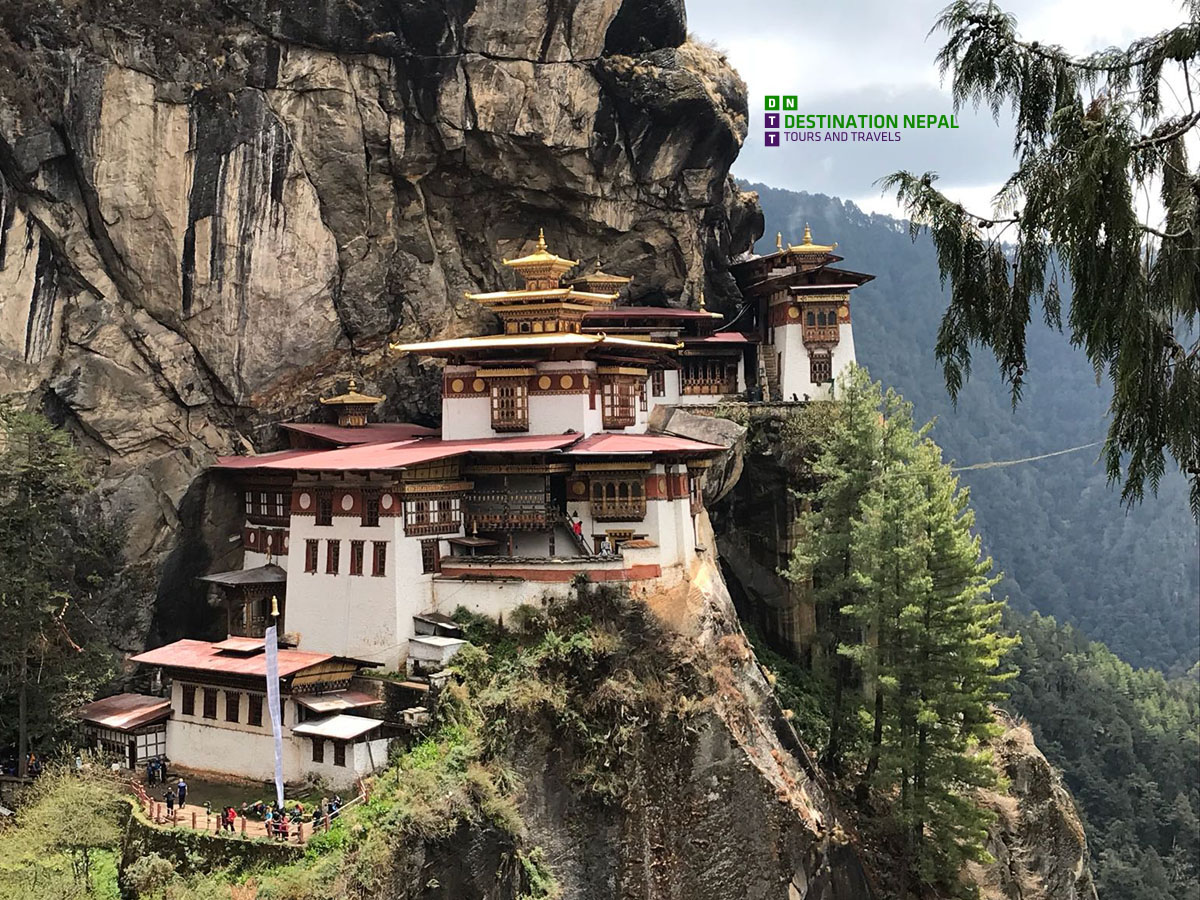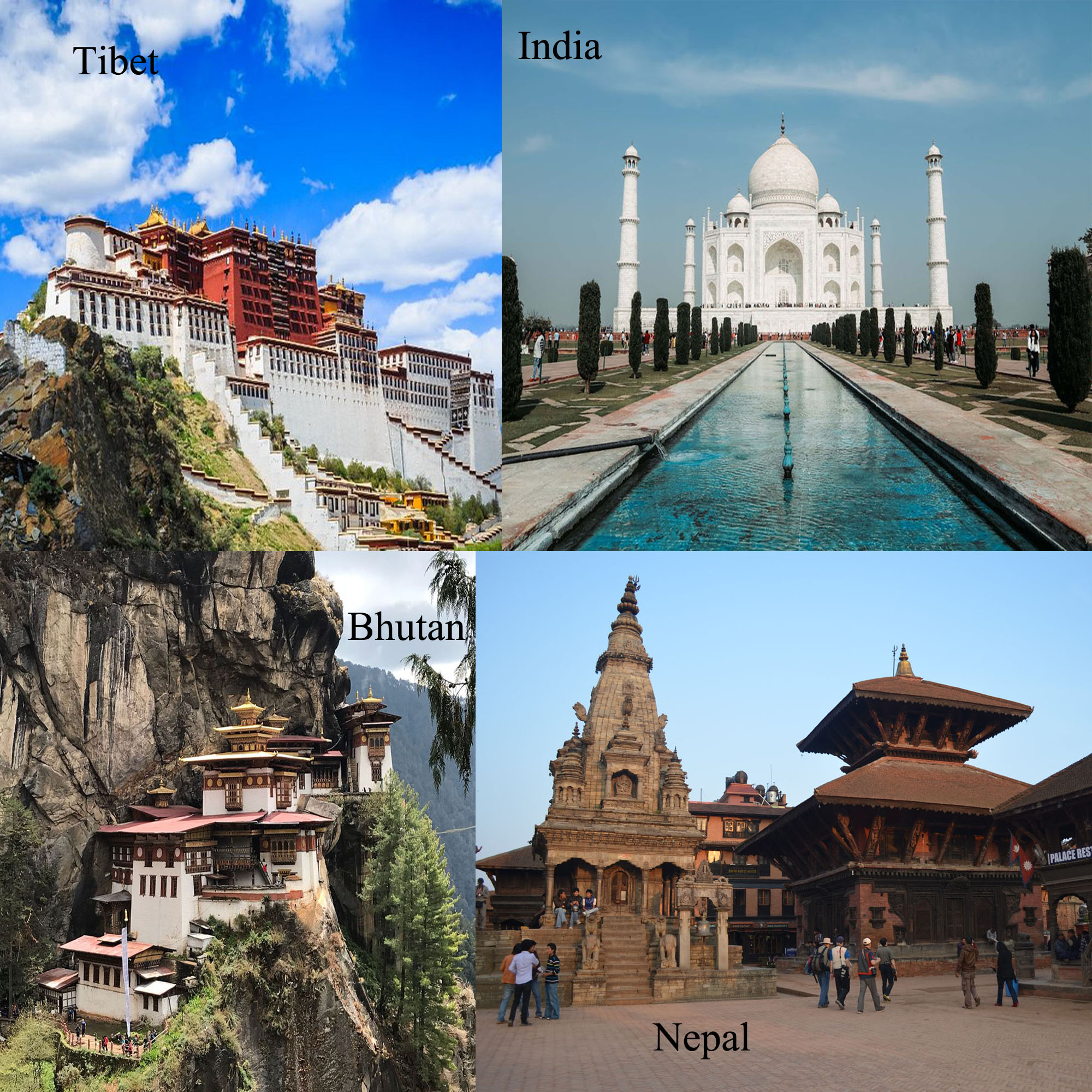Beautiful Lake City Pokhara
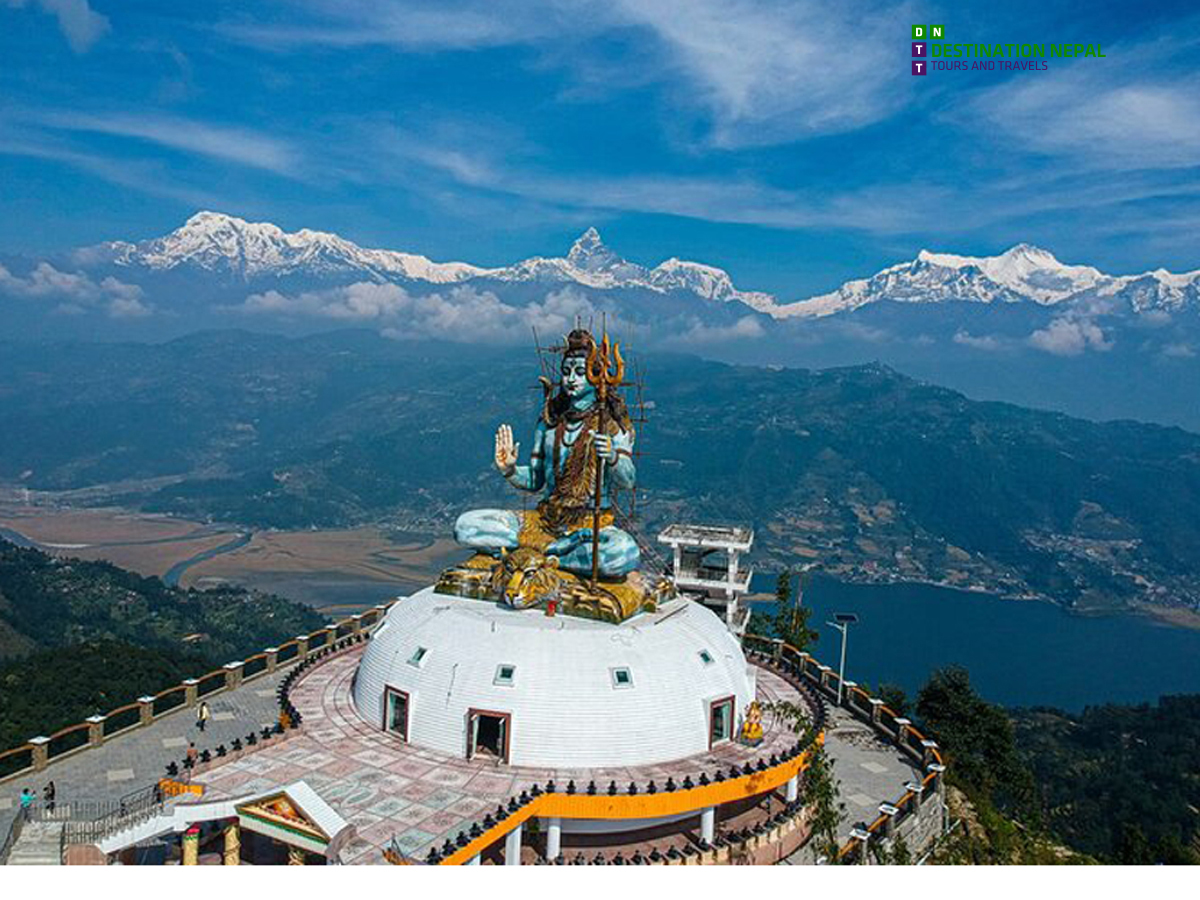
Places to Visit in Kathmandu Valley
Places to Visit in Chitwan
Beautiful Lake City Pokhara
Altitude: 915m above sea level
Distance from Kathmandu: 210km
Distance from Sauraha(Chitwan to Pokhara): 150 km
Distance from Sunauli Boarder, Bhairahawa: 190 km
Phewa Lake Pokhara – The Jewel of Pokhara’s Natural Beauty
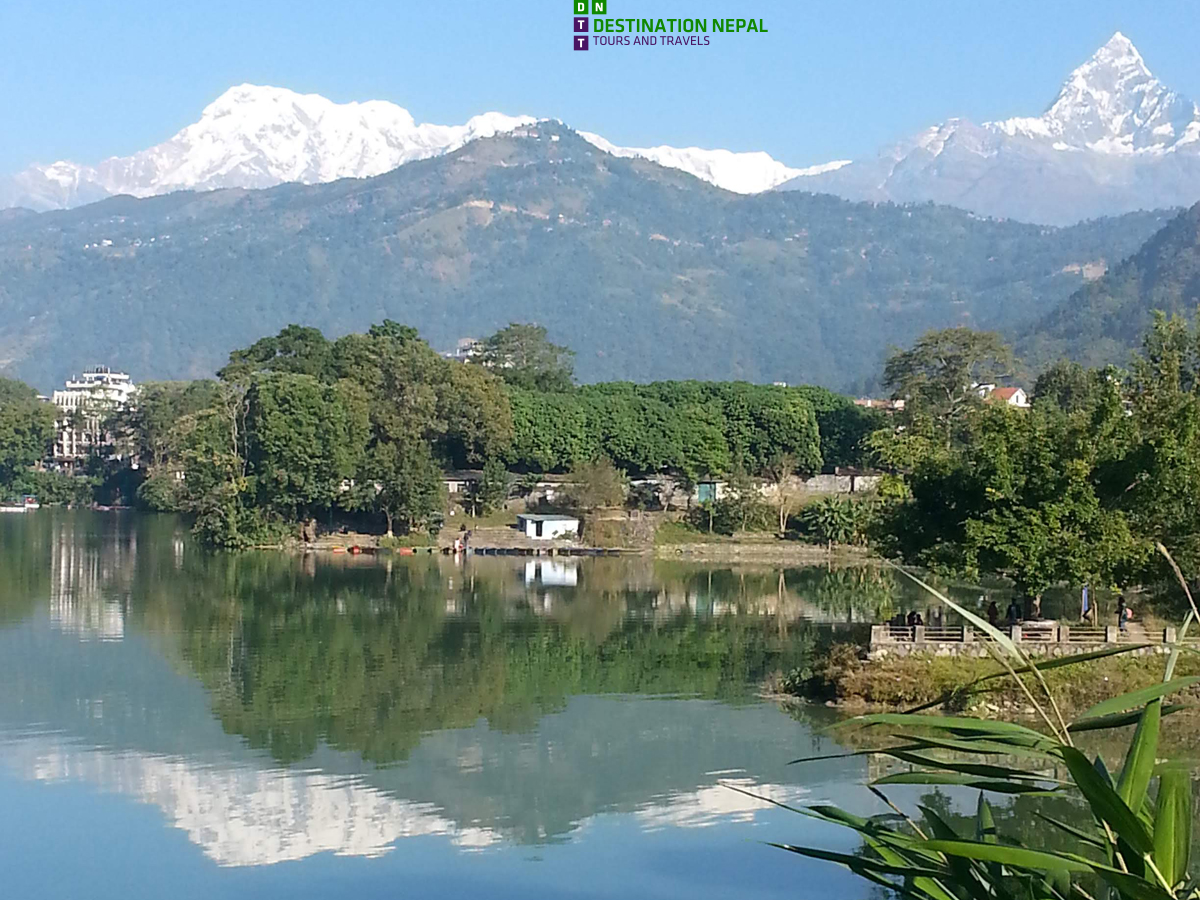
Phewa Lake, also known as Fewa Lake, is the most popular and beautiful freshwater lake in Pokhara, Nepal.
Nestled in the heart of Pokhara Valley, this stunning lake is one of the top tourist attractions in Pokhara, drawing visitors from around the world. Surrounded by lush green hills and offering panoramic views of the Annapurna and Machhapuchhre (Fishtail) mountains, Phewa Lake is a must-visit destination for nature lovers and photographers.
One of the major highlights of Phewa Lake is the iconic Tal Barahi Temple, located on a small island in the middle of the lake. Visitors can enjoy a scenic boat ride to reach the temple, making boating in Pokhara a memorable experience. Colorful wooden boats lined along the lakeside add charm to the area, creating a picturesque setting.
The lakeside area of Phewa Lake is vibrant with cafes, restaurants, and souvenir shops, making it a perfect spot to relax after boating or walking by the shore. Whether you’re seeking adventure or peaceful sightseeing, Phewa Lake offers a blend of natural beauty and cultural charm.
For anyone exploring places to visit in Pokhara, Phewa Lake stands at the top of the list.
Phewa Lake is the centre of all attraction in Pokhara. It is the largest and most enchanting of three lakes that add to the resplendence of Pokhara. Here, one can sail or row a hired boat across the water of the lake or visit the island temple in the middle of the lake, the eastern shore, popularly known as Lakeside or Baidam, is the favourite haunt of all travellers restaurants, handicraft shops and other tourist facilities are located.
Quick Inquiry?
📱 WhatsApp: +977-9851148105
📧 Email: info@dntt.com.np | destinationnepal@outlook.com
Tal Barahi Temple – Sacred Island Temple of Pokhara
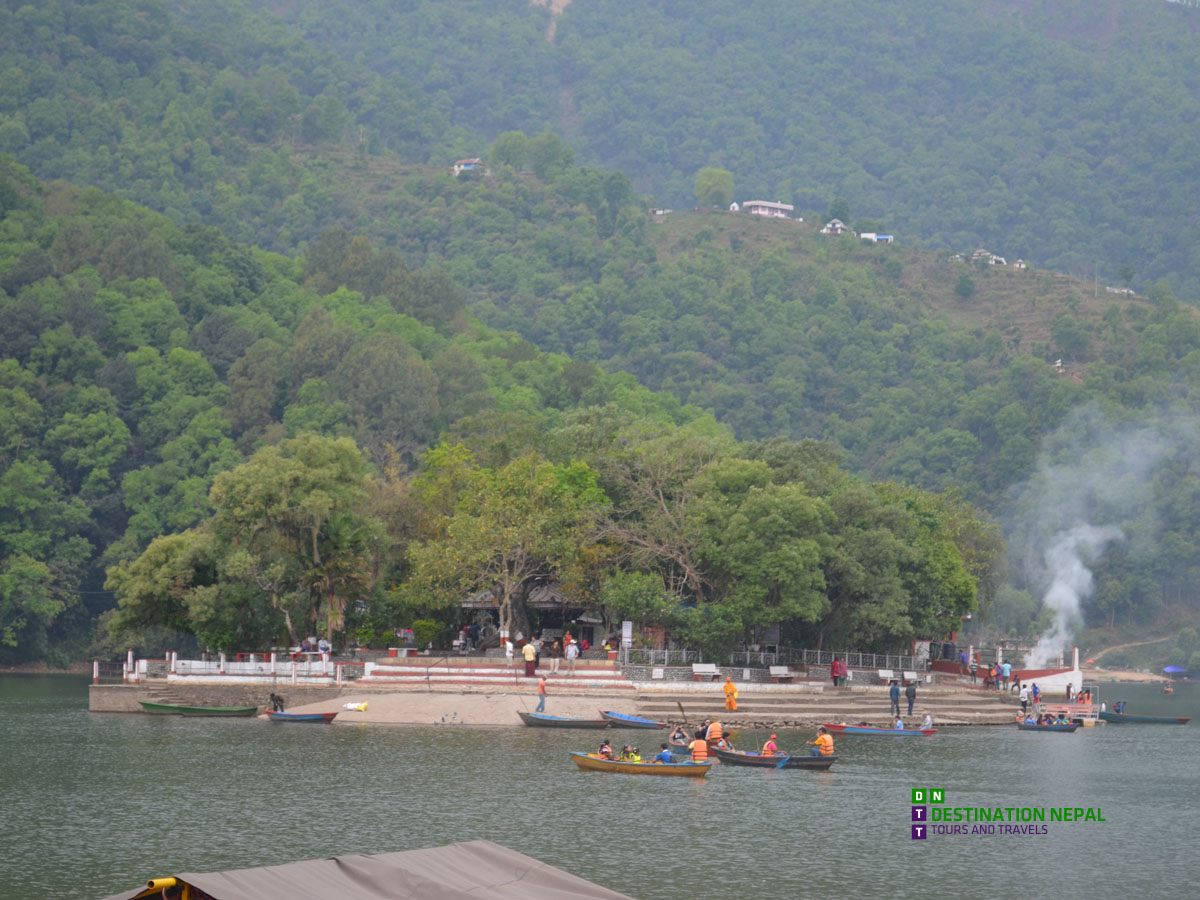
Tal Barahi Temple, also known as Barahi Temple, is one of the most revered religious sites in Pokhara, Nepal. Situated on a small island in the middle of the serene Phewa Lake, this beautiful two-storied pagoda-style temple is dedicated to Goddess Barahi, an incarnation of Goddess Durga. The temple is a significant pilgrimage destination for both locals and visitors seeking spiritual blessings.
To reach Tal Barahi Temple, visitors take a short boat ride across Phewa Lake, adding to the charm and tranquility of the visit. Surrounded by calm waters and scenic views of the Annapurna mountain range, the temple offers a peaceful retreat and cultural experience.
Tal Barahi Temple is especially crowded during festivals like Dashain and other religious occasions, where devotees offer prayers and animal sacrifices to the goddess.
For travelers exploring Pokhara, visiting Tal Barahi Temple is a must for its religious significance, natural beauty, and panoramic lake views. It’s an ideal combination of spirituality and scenic adventure.
Quick Inquiry?
📱 WhatsApp: +977-9851148105
📧 Email: info@dntt.com.np | destinationnepal@outlook.com
Gupteshwor Mahadev Cave Pokhara – Nepal’s Longest and Sacred Shiva Cave
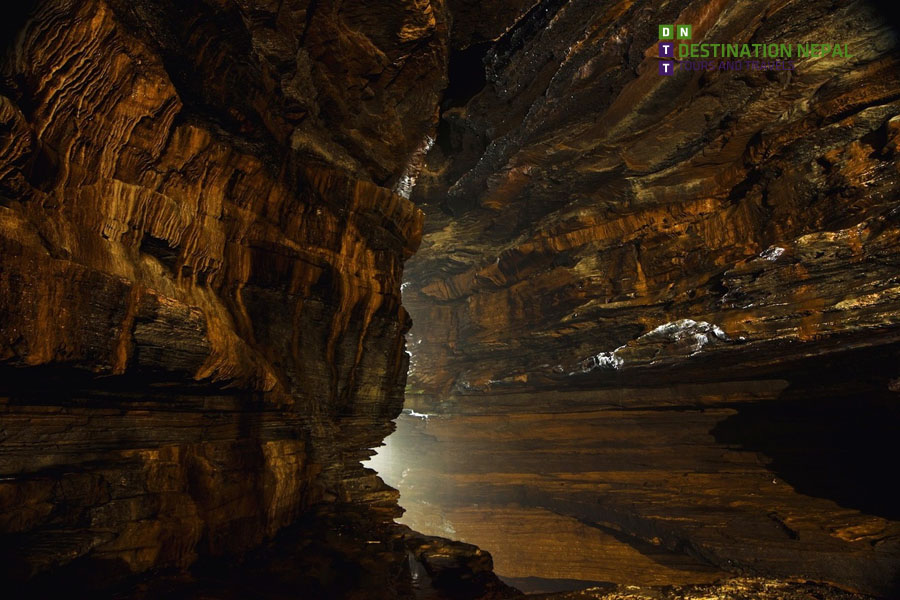
Gupteshwor Mahadev Cave is one of the most fascinating natural caves in Pokhara and a major religious site dedicated to Lord Shiva. Located just 100 meters from the famous Devi’s Fall, in southwest Pokhara, this cave is believed to be the longest cave in South Asia, stretching an impressive 2,950 meters.
Discovered in the early 1990s and officially opened to the public in 1994, the cave houses a naturally formed Shiva Linga about 150 meters below the surface. The name “Gupteshwor” translates to “Hidden Shiva,” emphasizing its secretive and sacred location.
Just 40 meters from the entrance, visitors can see unique natural rock formations resembling Lord Shiva, Goddess Parvati, Lord Ganesh, and Naag (serpent deity). The inner sanctum also features glowing limestone formations and provides a spectacular underground view of Devi’s Falls.
Two northern tunnels and one southern passage connect to Phusre Khola, enhancing the geological importance of the cave. Inside, you’ll also find serene water ponds and carved rock sanctuaries.
Open daily from 6 AM to 7 PM, Gupteshwor Mahadev Pokhara is a must-visit for devotees and adventurers alike, blending spiritual heritage, natural beauty, and exploration in one experience.
Quick Inquiry?
📱 WhatsApp: +977-9851148105
📧 Email: info@dntt.com.np | destinationnepal@outlook.com
Discover Devis Fall Pokhara – A Natural Wonder with a Heartfelt History
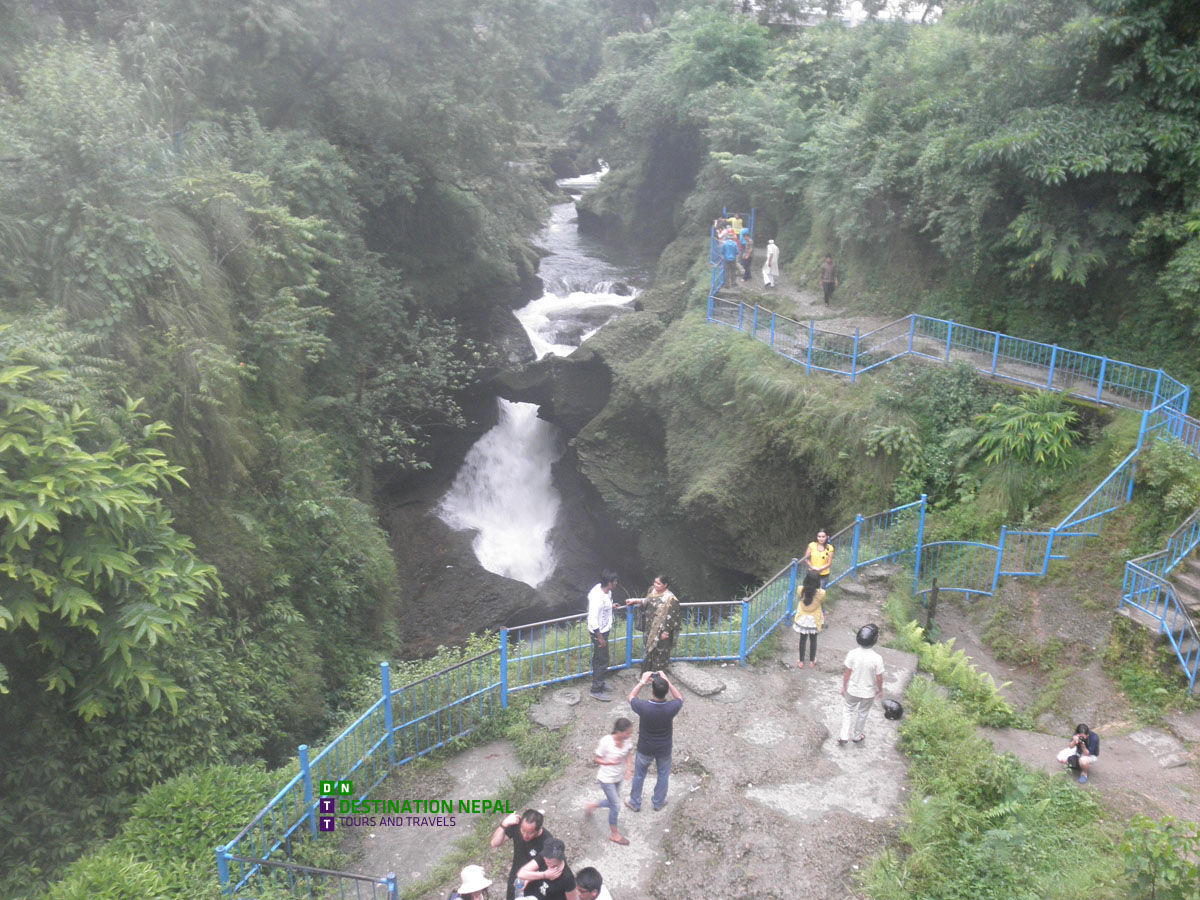
Devis Fall, also known as Patale Chhango, is one of the most famous tourist attractions in Pokhara, Nepal. This mysterious 100-foot-deep and 20-meter-wide waterfall dramatically plunges into an underground tunnel and connects to the nearby Gupteshwor Cave, making it a must-visit site for nature lovers and spiritual seekers alike.
Located just 2 km southwest of Lakeside Pokhara along Siddhartha Highway, this stunning waterfall in Pokhara is linked to Phewa Lake—its water vanishing into a deep gorge, earning it the local name “Patale,” meaning “underworld.”
The fall was named after a tragic incident in 1961 when a Swiss woman, Mrs. Davis, was swept away while bathing. Her father later donated funds to preserve the site, leading to its recognition as Devi’s Fall or Davis Falls.
Surrounded by safety railings, Devis Fall features a traditional Newar-style pati pauwa, a photo booth, a wishing well, and a small park. Uniquely, proceeds from ticket sales support education at Chhorepatan Higher Secondary School, making it a place of both natural beauty and social impact.
Whether you’re exploring Pokhara sightseeing spots or seeking a deeper story, Devis Fall offers a rich blend of history, nature, and purpose.
Quick Inquiry?
📱 WhatsApp: +977-9851148105
📧 Email: info@dntt.com.np | destinationnepal@outlook.com
Discover Mahendra Cave in Pokhara – A Hidden Natural Wonder
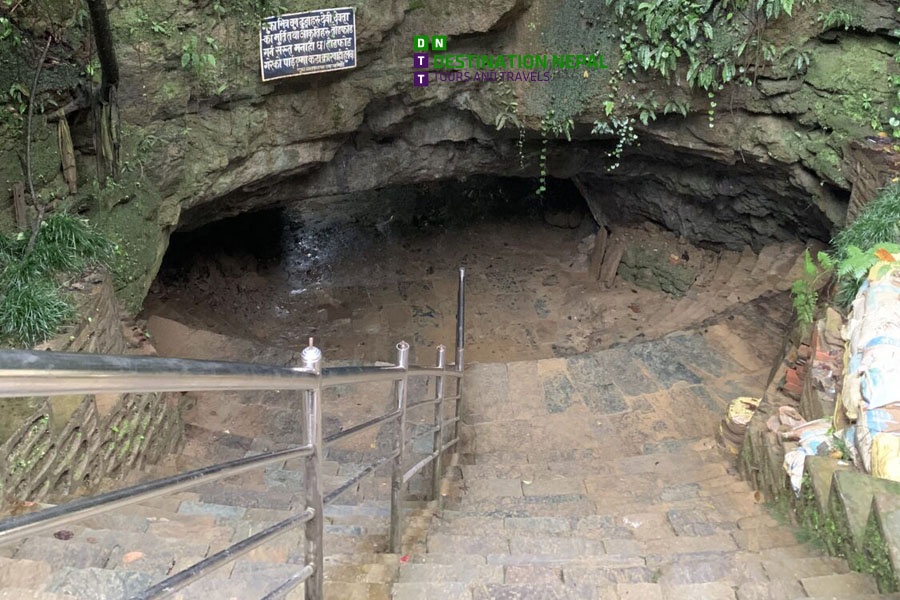
Mahendra Cave, located in Batulechaur, Pokhara, is one of the most fascinating natural attractions in Nepal. Known for its striking limestone formations, this cave offers visitors a unique underground adventure. Named after King Mahendra Bir Bikram Shah Dev, the cave was discovered in the 1950s by local shepherds. Today, it stands as a popular tourist destination for travelers exploring Pokhara’s natural beauty.
The cave features impressive stalactites and stalagmites, with sparkling limestone walls that captivate every visitor. A special highlight is a naturally formed stalagmite resembling Lord Ganesh, adding cultural significance to this geological wonder. Mahendra Cave is also home to a colony of bats, giving visitors a true sense of adventure.
Situated about 5.8 miles from Pokhara’s Lakeside, Mahendra Cave is easily accessible by bus, car, or bicycle. The entrance fee is minimal, making it a budget-friendly attraction for both domestic and international tourists.
While visiting Mahendra Cave, travelers can also explore nearby attractions such as Kali Khola and enjoy scenic cycling routes to Begnas and Rupa Lakes. If you’re planning a Pokhara tour, don’t miss the opportunity to explore Mahendra Cave – a hidden gem that beautifully blends nature, geology, and local heritage.
Quick Inquiry?
📱 WhatsApp: +977-9851148105
📧 Email: info@dntt.com.np | destinationnepal@outlook.com
Explore Chamero Gufa (Bat Cave) – The Thrilling Adventure Cave in Pokhara
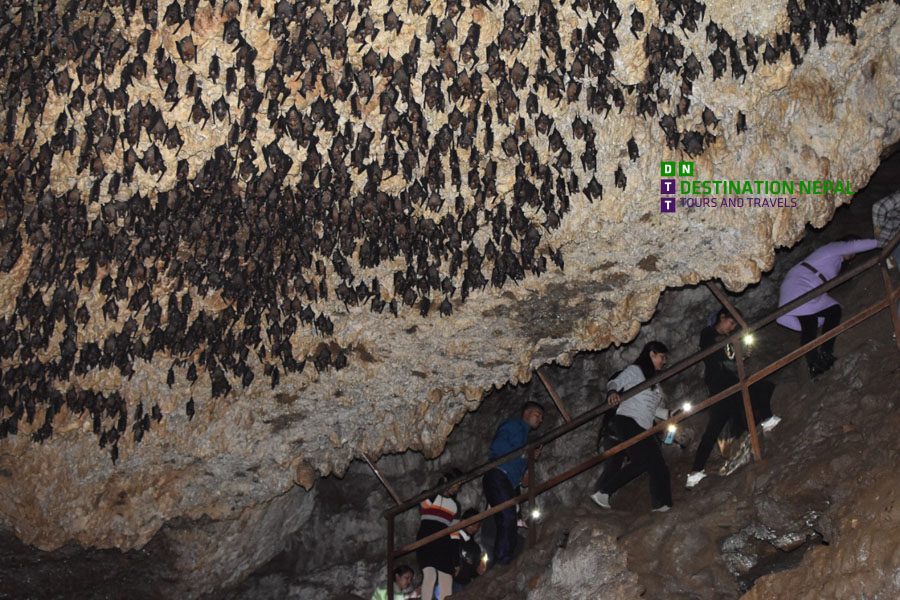
Chamero Gufa, famously known as Bat Cave, is one of the most adventurous natural attractions in Pokhara, Nepal. Located about 10 kilometers northwest of Lakeside, this limestone cave is home to thousands of bats, making it a must-visit spot for nature and adventure lovers. Discovered in 1986 AD (2043 B.S.) by local residents, Bat Cave offers a thrilling underground experience in the Batulechaur area, just a short 10-minute walk from Mahendra Cave.
The cave stretches 225 meters in length and features two entrances. The wide main entrance welcomes visitors easily, while the narrow exit passage challenges you to crawl through a tiny opening, adding an exciting twist to your exploration. It’s said that only those who are pure of heart can pass through the tight exit!
Inside, you’ll find various species of bats hanging from the ceilings and walls, illuminated by emergency lights provided at the entrance. The walls of the cave also showcase fascinating rock formations of stalactites and stalagmites.
Easily accessible by bus, bicycle, or private vehicle, Chamero Gufa is a highlight of Pokhara sightseeing tours. Combine your visit with nearby attractions like Mahendra Cave, Seti River Gorge, and the Gurkha Museum for a complete adventure in Pokhara.
Quick Inquiry?
📱 WhatsApp: +977-9851148105
📧 Email: info@dntt.com.np | destinationnepal@outlook.com
Discover Seti Gandaki Gorge – The Hidden Natural Wonder of Pokhara
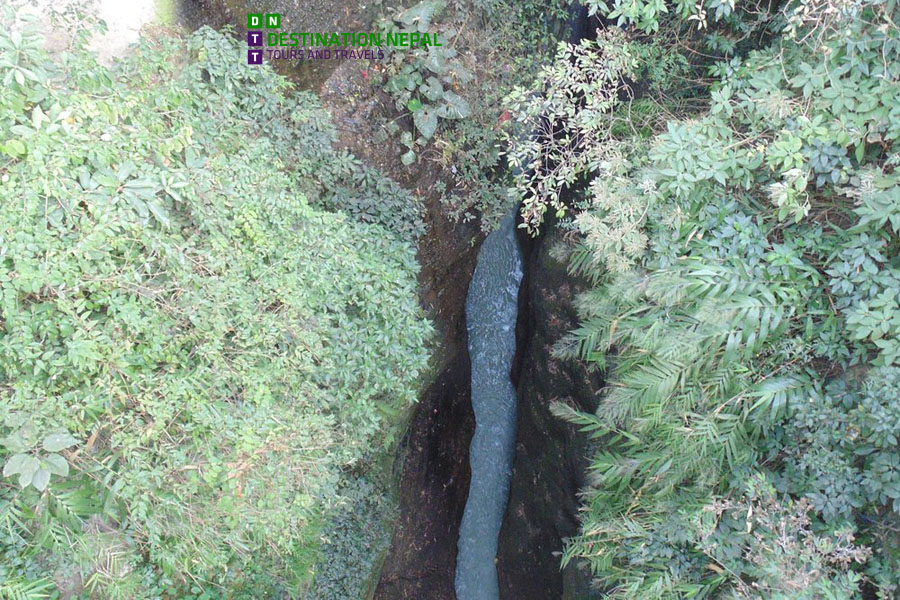
The Seti Gandaki Gorge is one of the most fascinating natural attractions in Pokhara, Nepal. Carved by the powerful Seti Gandaki River, this deep gorge flows right through the heart of the city, offering visitors a rare and breathtaking view of nature’s force. What makes this river unique is its mysterious path—disappearing underground at several locations and reappearing unexpectedly.
At certain points, the Seti River narrows down to just two meters wide, yet its depth plunges over 20 meters, creating a dramatic contrast that amazes all who witness it. One of the best spots to experience this marvel is Mahendra Pul, a small bridge located near the old mission hospital in Pokhara. From this vantage point, visitors can see the rushing white waters forcefully cutting through the limestone cliffs below.
Seti Gandaki Gorge is easily accessible from Pokhara’s Lakeside area, making it a perfect stop on your city tour. Its stunning natural beauty and geological uniqueness make it a must-visit for anyone exploring Pokhara.
Add Seti Gandaki Gorge to your Pokhara sightseeing itinerary to experience the dramatic beauty of one of Nepal’s hidden natural treasures.
Quick Inquiry?
📱 WhatsApp: +977-9851148105
📧 Email: info@dntt.com.np | destinationnepal@outlook.com
Explore Pokhara’s Cultural Heritage: The Old Bazaar and Bindhyabasini Temple
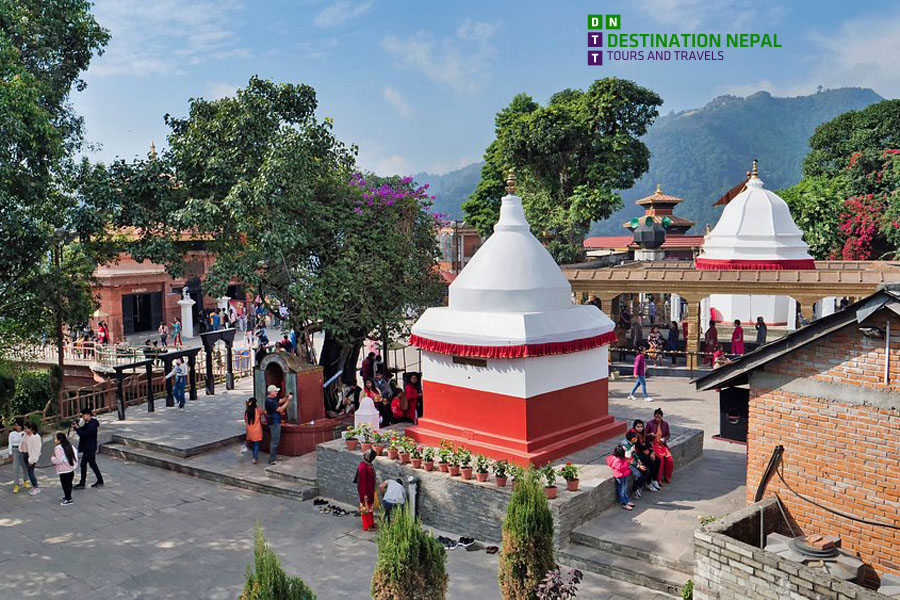
For travelers seeking to experience the cultural richness of Pokhara, a visit to The Old Bazaar combined with Bindhyabasini Temple offers a perfect blend of history, spirituality, and local life. Located just about 3 kilometers north of Lakeside, Pokhara Old Bazaar (also known as Purano Bazaar) is a vibrant marketplace reflecting the traditional Newari architecture, culture, and daily lifestyle of Pokhara’s locals. Unlike the modern tourist hubs, this historical bazaar is a center of trade where you can find everything from fresh vegetables to local handicrafts and spices.
Wandering through the narrow alleys of the Old Bazaar, visitors can witness a unique blend of ethnic diversity, especially of Newar, Gurung, and Thakali communities. The area still preserves the charm of Pokhara before it became a tourist hotspot, offering visitors a glimpse into authentic Nepalese life.
Standing gracefully on a small hill above the Old Bazaar is the Shree Bindhyabasini Temple, one of the oldest and most revered Hindu temples in Pokhara. Dedicated to Goddess Bindhyabasini, a manifestation of Kali, the temple attracts both devotees and tourists. Along with spiritual significance, the temple also offers breathtaking panoramic views of the Annapurna Himalayan range and the city of Pokhara.
This sacred site is particularly lively during major Hindu festivals such as Teej, Dashain, Janai Purnima, and Krishna Janmashtami. The tranquil temple premises, combined with the bustling life of the Old Bazaar, create a unique contrast of spirituality and local culture.
Visiting Bindhyabasini Temple and The Old Bazaar together is highly recommended for anyone exploring Pokhara’s cultural heritage. It is a journey through history, faith, and local tradition—all in one enriching experience.
Quick Inquiry?
📱 WhatsApp: +977-9851148105
📧 Email: info@dntt.com.np | destinationnepal@outlook.com
World Peace Pagoda – A Symbol of Harmony in Pokhara
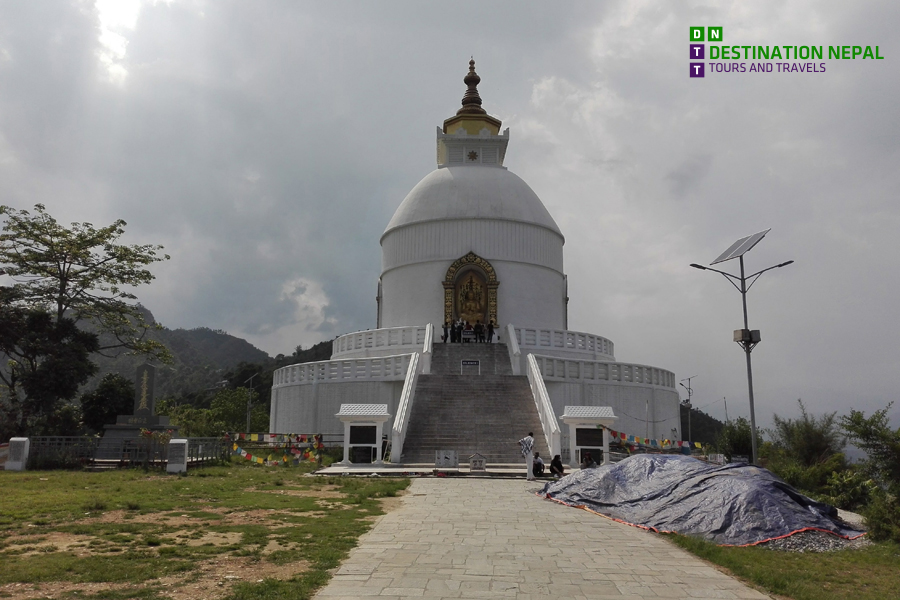
The World Peace Pagoda, also known as Shanti Stupa, is one of Pokhara’s most iconic landmarks and a symbol of global peace. Located on Ananda Hill, this beautiful white stupa was constructed by the Japanese Buddhist organization Nipponzan Myohoji to promote peace and harmony worldwide. The foundation was laid by Buddhist monk Nichidatsu Fujii in 1973, with the sacred relics of Lord Buddha enshrined inside. Despite initial challenges, the pagoda was completed in 1999 with strong local support.
Standing at a height of 115 feet with a circumference of 344 feet, the World Peace Pagoda Pokhara offers panoramic views of the Annapurna mountain range, Fewa Lake, and the lush Pokhara Valley. Visitors can walk along the Pradakshina Path (circumambulation path) encircling the stupa while admiring the four golden Buddha statues representing different phases of Buddha’s life, sourced from Nepal, Japan, Sri Lanka, and Thailand.
This serene site is not only a place for religious devotion but also a popular destination for hikers, cyclists, and sightseeing tours in Pokhara. The breathtaking Himalayan views combined with the stupa’s tranquil ambiance make it one of the must-visit attractions in Pokhara.
Quick Inquiry?
📱 WhatsApp: +977-9851148105
📧 Email: info@dntt.com.np | destinationnepal@outlook.com
Breathtaking Mountain Views of Pokhara – Annapurna and Machhapuchhre

One of the most captivating highlights of Pokhara is its stunning Himalayan mountain views, attracting travelers from around the world. The majestic Annapurna mountain range forms a breathtaking backdrop to the city, stretching from east to west. This impressive range includes towering peaks like Annapurna I (8091m), Annapurna II, Annapurna III, Annapurna IV, and Annapurna South.
While Annapurna I holds the title of the highest peak in the range, it is the iconic Machhapuchhre (Fishtail Mountain) that captures every visitor’s attention. Standing proudly at 6,993 meters, Machhapuchhre dominates Pokhara’s skyline with its distinctive fishtail-shaped summit. Revered by locals as a sacred mountain, it has never been officially climbed, preserving its pristine beauty.
Whether viewed from Sarangkot, the World Peace Pagoda, or directly from Lakeside Pokhara, the panorama of these snow-capped Himalayan giants leaves visitors speechless. Early mornings and evenings are especially magical, as the mountains glow with golden hues during sunrise and sunset.
For anyone visiting Nepal, witnessing the Annapurna mountain views in Pokhara is truly a once-in-a-lifetime experience.
Quick Inquiry?
📱 WhatsApp: +977-9851148105
📧 Email: info@dntt.com.np | destinationnepal@outlook.com
Sarangkot – Best Sunrise and Paragliding Viewpoint in Pokhara
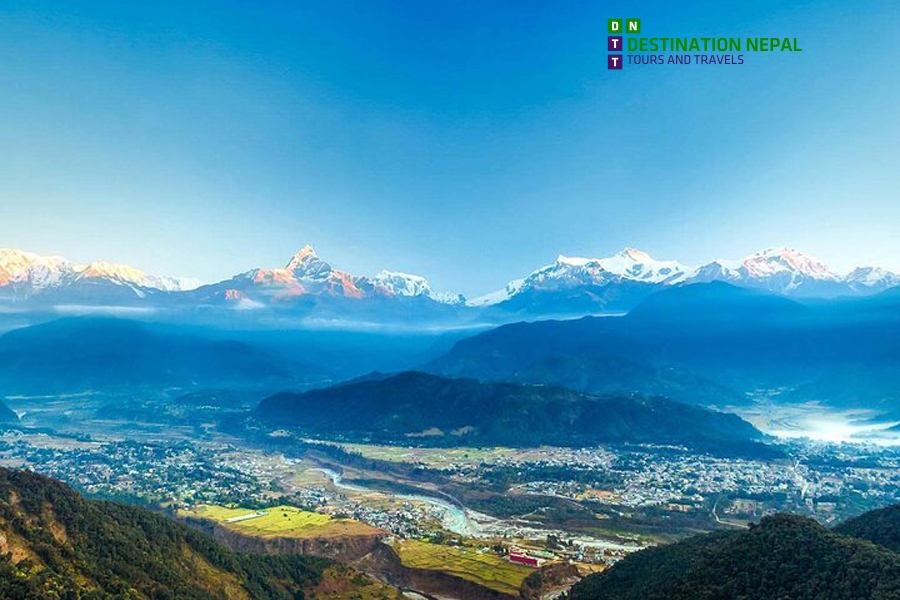
Sarangkot is one of the most popular tourist attractions in Pokhara, renowned for offering breathtaking views of the Annapurna Himalayan range. Located just 5 kilometers from Lakeside Pokhara, Sarangkot sits at an elevation of 1,600 meters, making it the perfect place for sunrise and sunset views over the snow-capped peaks.
From the Sarangkot viewpoint, visitors can witness panoramic vistas of Annapurna I (8,091m), Machhapuchhre (Fishtail, 6,993m), and Dhaulagiri (8,167m). The view of Fewa Lake sparkling beneath the towering mountains completes this picturesque scene. Historically, Sarangkot was an ancient fort, and the village below still reflects its traditional charm.
Sarangkot is also globally recognized as the best paragliding spot in Pokhara. Adventure seekers from around the world come here to enjoy paragliding flights that provide a bird’s-eye view of Pokhara Valley, Himalayan peaks, and lush green hills. The thrill of flying above Pokhara with the Himalayas in the background is an unforgettable experience.
For travelers seeking both adventure and scenic beauty, Sarangkot Pokhara is a must-visit destination. Whether you visit for sunrise, paragliding, or simply to enjoy the stunning Himalayan views, Sarangkot promises an extraordinary experience.
Quick Inquiry?
📱 WhatsApp: +977-9851148105
📧 Email: info@dntt.com.np | destinationnepal@outlook.com
Shiva Statue Pumdikot – Visit Nepal’s Tallest Shiva Statue in Pokhara
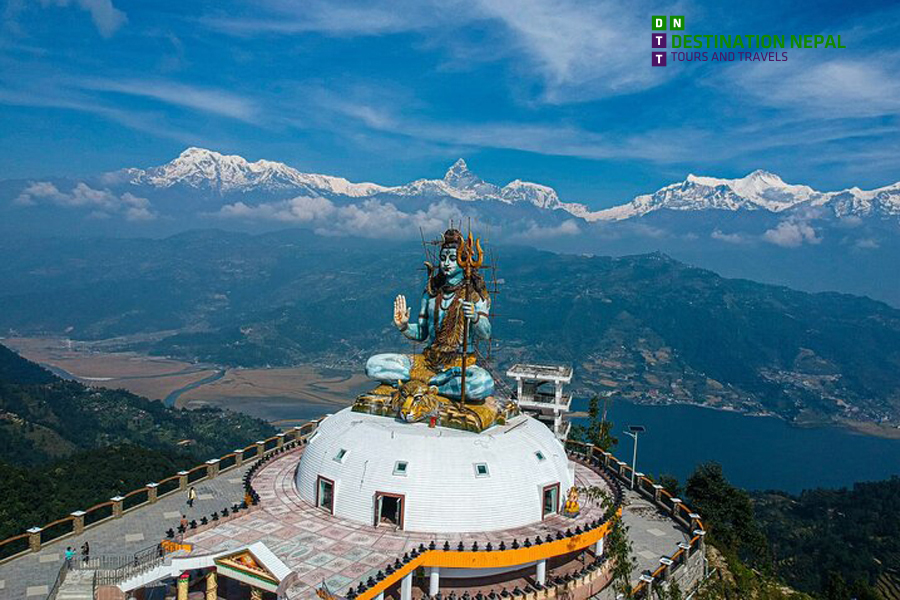
The Shiva Statue at Pumdikot has quickly become one of the major highlights of Pokhara sightseeing. Known as Nepal’s tallest Lord Shiva statue, this impressive monument attracts both domestic and international travelers seeking spiritual and scenic experiences. Situated at an elevation of 1,500 meters, the Pumdikot Shiva Temple also features the largest Shiva Damaru in Asia, adding to its religious and cultural importance.
The massive Lord Shiva statue was constructed in Mathura, India, and transported to Pokhara for installation, making it a remarkable symbol of devotion and artistry.
How to reach Pumdikot Shiva Statue:
Visitors can either drive or hike to the temple from Lakeside Pokhara, just 10.5 kilometers away. A private vehicle takes about 30 minutes, while public buses to Syangja take approximately 50 minutes. For adventure enthusiasts, hiking to Pumdikot offers an excellent way to enjoy Pokhara’s natural beauty. The hike takes around 2 hours one way, providing stunning views of Pokhara Valley, Fewa Lake, and the surrounding hills.
Whether you come for religious devotion or panoramic Himalayan scenery, Pumdikot Shiva Statue is a must-visit destination during your Pokhara tour.
Quick Inquiry?
📱 WhatsApp: +977-9851148105
📧 Email: info@dntt.com.np | destinationnepal@outlook.com
Discover Jangchub Choeling Monastery – A Peaceful Tibetan Monastery in Pokhara
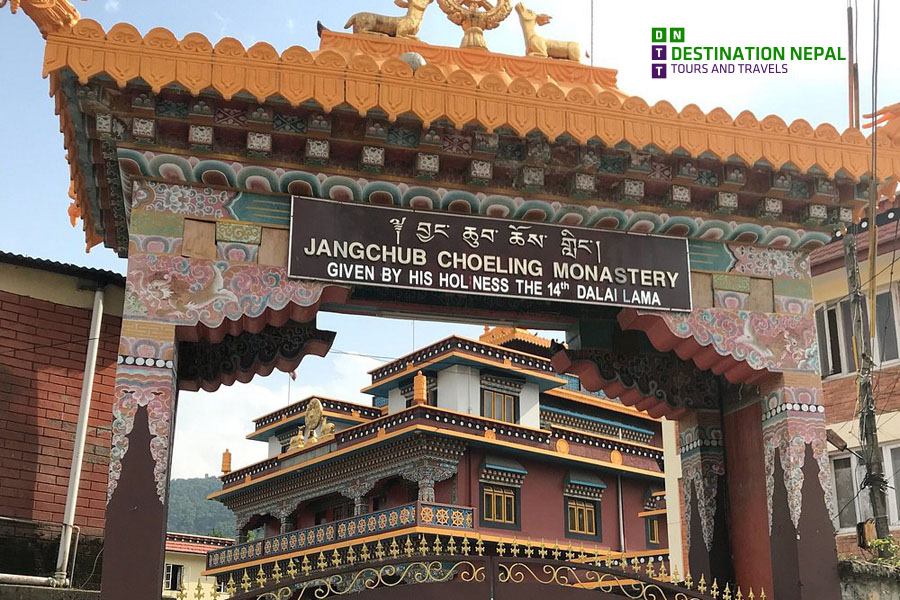
Jangchub Choeling Monastery is one of the most significant Buddhist monasteries in Pokhara, located inside the Tibetan refugee settlement at Baglung Rajmarg. This beautiful monastery in Pokhara serves as a vibrant center for Buddhist teachings, ceremonies, and spiritual practices. Named by His Holiness the 14th Dalai Lama, Jangchub Choeling Monastery reflects the deep spiritual connection between Tibetan culture and Buddhism in Nepal.
Built in traditional Tibetan architectural style, the monastery features a grand prayer hall decorated with colorful murals and religious art. The peaceful atmosphere of this Tibetan monastery attracts not only Buddhist followers but also visitors seeking cultural and spiritual experiences in Pokhara.
The main attraction of Jangchub Choeling Monastery is its impressive 7-foot-long copper and gold-plated statue of Lord Buddha, surrounded by 1,000 miniature Buddha statues, symbolizing compassion and enlightenment. Daily prayer rituals performed by resident monks provide visitors with an opportunity to witness Tibetan Buddhist culture firsthand.
For those looking for peaceful places to visit in Pokhara or exploring Buddhist pilgrimage sites in Nepal, Jangchub Choeling Monastery is a must-visit destination.
Location: Baglung Rajmarg, Tibetan Refugee Camp, Pokhara 33700, Nepal
Quick Inquiry?
📱 WhatsApp: +977-9851148105
📧 Email: info@dntt.com.np | destinationnepal@outlook.com
Explore International Mountain Museum Pokhara – A Gateway to Himalayan Heritage
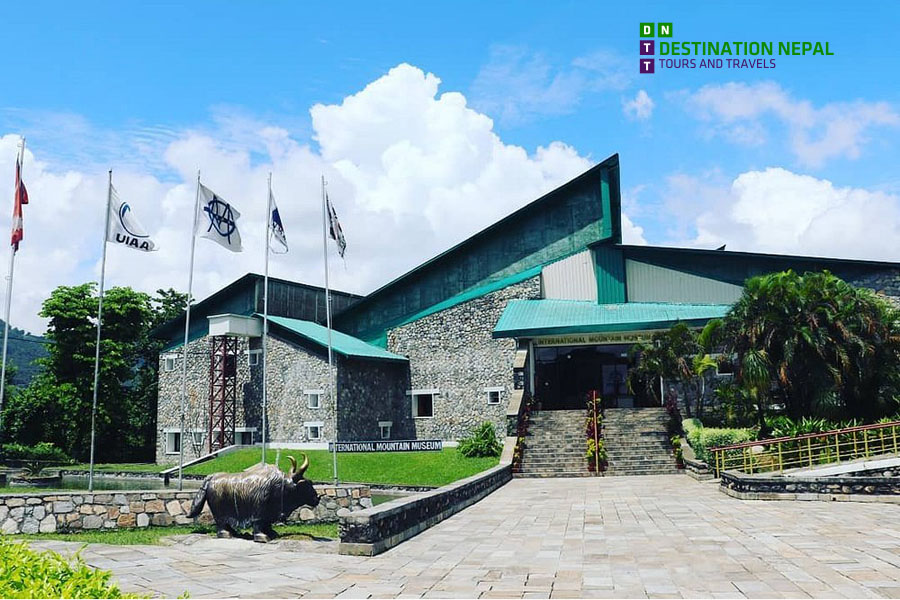
The International Mountain Museum (IMM) in Pokhara is a top cultural attraction in Nepal dedicated to the history, culture, and science of the world’s mountain regions. Established in 2004 AD by the Nepal Mountaineering Association, this unique mountain museum in Nepal showcases the legacy of Himalayan mountaineering, mountain people, and global mountain systems.
Spread over 100 ropanis of land, IMM houses three major exhibition halls: Mountain People Gallery, Mountain Gallery, and Mountaineering Activities Gallery. These sections highlight the lives of indigenous mountain communities, geological evolution, flora and fauna, and the heroic records set by legendary climbers. Notable exhibits include mountaineering gear, documentation on Everest summiteers like Junko Tabei and Appa Sherpa, and insights into climate change and its impact on mountain environments.
Visitors can also explore a replica of Mt. Manaslu, an artificial climbing wall, traditional Himalayan house models, a souvenir shop, and a peaceful garden area. The museum also features a library and aims to establish the International Mountain Studies Centre (IMSC) for advanced research.
Just a short drive from Lakeside Pokhara, this museum is a must-visit for anyone passionate about mountains, adventure, and culture.
Visit Matepani Gumba Pokhara – A Peaceful Hilltop Buddhist Monastery
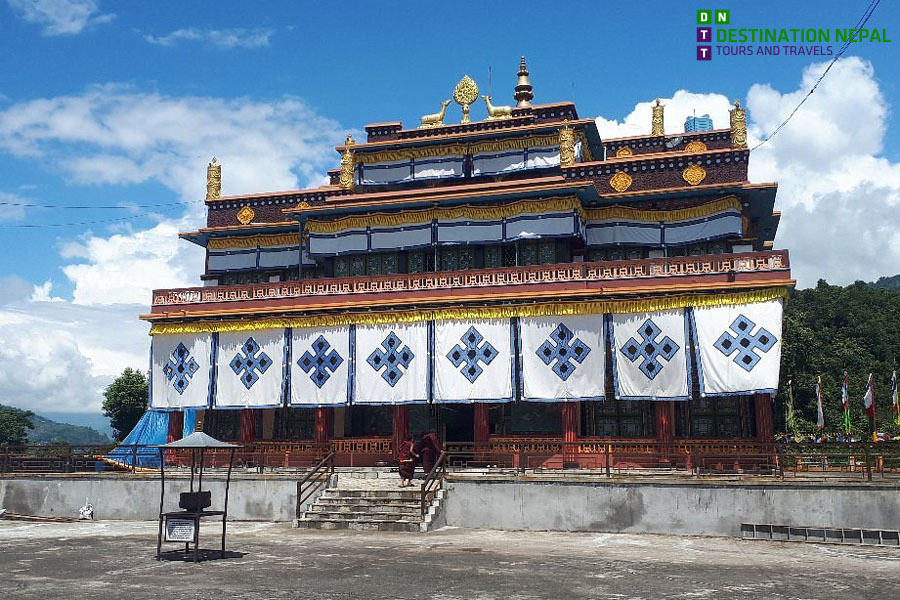
Matepani Gumba is one of the most serene and spiritually rich Buddhist monasteries in Pokhara, Nepal. Located in the Kundahar area, about 5 kilometers east of Mahendrapul, this hilltop monastery offers stunning panoramic views of Pokhara Valley and a peaceful escape from the bustling lakeside.
Established in 1960 AD by the Nyeshang people from Manang, Matepani Gumba is among the oldest monasteries in Pokhara. The monastery belongs to the Nyingma school of Tibetan Buddhism, one of the oldest Buddhist traditions. The monastery’s interior is adorned with vibrant wall paintings that depict key events from the life of Lord Buddha, along with intricate Buddhist iconography.
A highlight of the Matepani Monastery is the grand prayer hall, where monks conduct daily chanting and rituals. An 11-foot tall statue of Buddha, as well as statues of Guru Rinpoche, make this site both visually and spiritually captivating. The monastery also houses a school where young monks study Buddhist philosophy alongside Nepal’s standard curriculum.
Whether you are seeking spiritual solace or cultural exploration, visiting Matepani Gumba Pokhara is a must-do for those looking to experience the city’s sacred and tranquil side.
Kedareshwor Mahadev Temple Pokhara – A Sacred Shiva Shrine by Fewa Lake
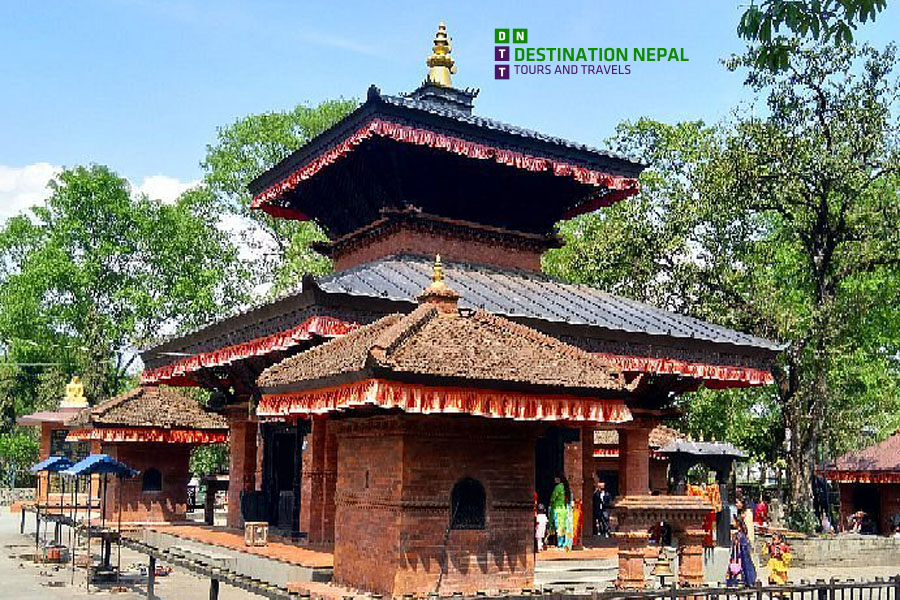
Kedareshwor Mahadev Temple is a prominent Hindu temple in Pokhara, located on the northern shore of Fewa Lake in the Baidam area. Dedicated to Lord Shiva, this spiritual site is among the most revered religious places in Pokhara. It was founded between 1950 B.S. and 1960 B.S. by Swami Shankaranandaji, a key disciple of Swargadwari Mahaprabhu. The temple represents a symbolic version of the Kedarnath Temple in India, built to provide spiritual access to those unable to make the arduous pilgrimage.
Designed in traditional pagoda style, Kedareshwor Mahadev is constructed in a Panchayatana layout—with the central Shiva shrine surrounded by temples of Ganesh, Durga, Vishnu, and Surya. Major Hindu festivals are celebrated here, including Bolbom Mela, Akshaya Tritiya, Guru Purnima, Janai Purnima, and Durga Ashtami.
The temple also operates a free residential Gurukul from grades 6–10, blending Vedic education with modern subjects to develop disciplined, culturally rooted citizens. A Gaushala (cow shelter) and Akshay Kosh (perpetual fund) support temple rituals and future projects.
Visiting Kedareshwor Mahadev Pokhara offers a deep spiritual experience, perfect for those exploring Pokhara's sacred heritage and seeking blessings in a tranquil lakeside setting.
Kaskikot Kalika Temple Pokhara – A Spiritual and Historical Shakti Peeth
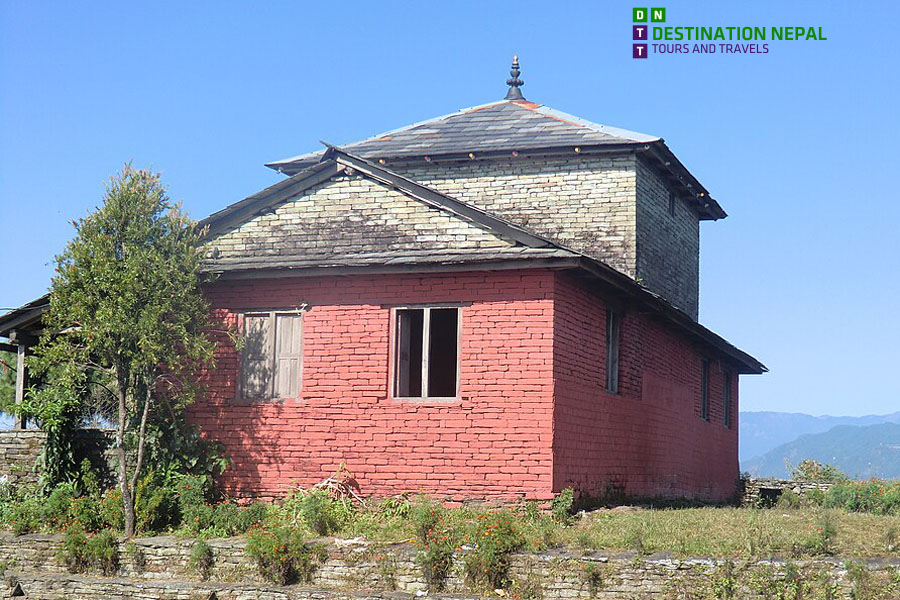
Kaskikot Kalika Temple, located just 18 km from Lakeside Pokhara, is a revered Shakti Peeth in Nepal known for its deep spiritual energy and historical significance. Perched at an altitude of 1,788 meters, the temple offers breathtaking views of the Annapurna, Dhaulagiri, Machhapuchhre, and Manaslu mountain ranges, as well as panoramic sights of Fewa Lake and Pokhara Valley.
This sacred Hindu temple in Pokhara was established in honor of Gupta Kalika Devi, a hidden manifestation of Goddess Kalika. According to legend, the temple originated as a spiritual alternative to the Kedarnath Yatra, and its name “Kaski” is linked to Sage Kashyap, who is believed to have meditated here. The temple holds strong cultural ties to the Shah Dynasty, including King Kulamandal Shah and Prithvi Narayan Shah.
Designed in traditional pagoda style, the temple hosts Vedic and Tantric rituals, especially during Dashain, Chaite Dashain, and Shaune Sankranti. Visitors can also witness ancient battle training performances, explore nearby sites like Maula Pokhari and Mahankaleshwor, and enjoy the natural beauty of local lakes and rhododendron forests.
Kaskikot Kalika Temple is a must-visit for cultural trekkers, history lovers, and spiritual seekers in Pokhara.
Begnas Lake Pokhara – A Peaceful Getaway and Natural Wonder
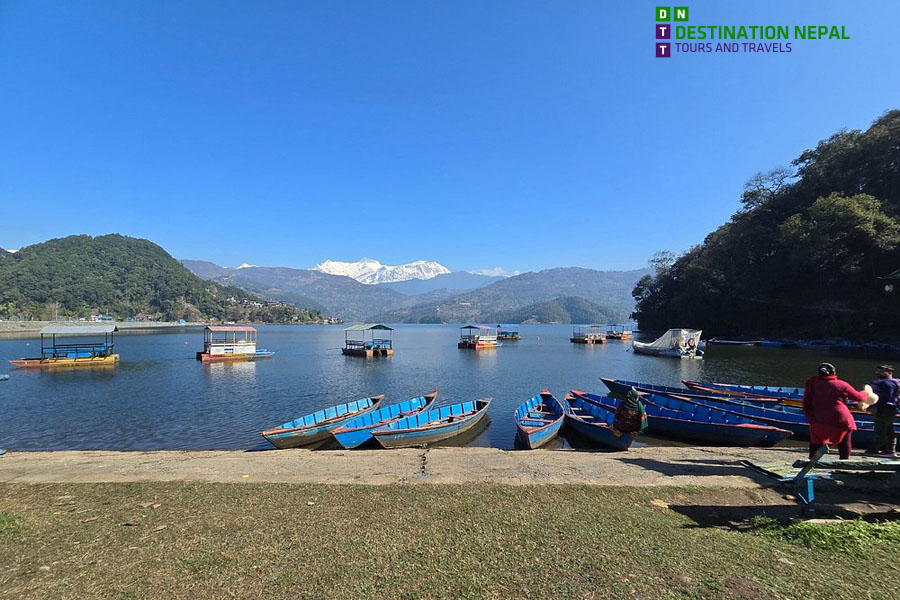
Begnas Lake, located around 15 km east of Lakeside Pokhara, is one of the most serene and scenic lakes in Pokhara. As the third largest lake in Nepal, it spans an area of 3.28 square kilometers and sits at an elevation of 650 meters. This natural freshwater lake has an average depth of 6.6 meters, with a maximum depth of 10 meters. Its primary water sources are the Syankhudi and Talbesi streams, while Khudi Khola serves as its outlet, eventually flowing into the Seti River.
Surrounded by lush hills on three sides, Begnas Lake offers a calm escape from the busy city. The lake’s western shore hosts cozy guesthouses with stunning views of the Himalayas and tranquil waters. It’s ideal for boating, fishing, and relaxing in nature.
The lake also holds cultural significance with a sacred stone inscription near the shore, now known as Tal Barahi, where a temple is under construction. Begnas also supports local livelihoods, with over 250 registered boats and many families engaged in fishing and cage fisheries. Its water is also vital for irrigation in surrounding farmlands.
For nature lovers and peace seekers, Begnas Lake Pokhara is a must-visit destination.
Discover Rupa Lake Pokhara – A Peaceful Hidden Gem in the Himalayas
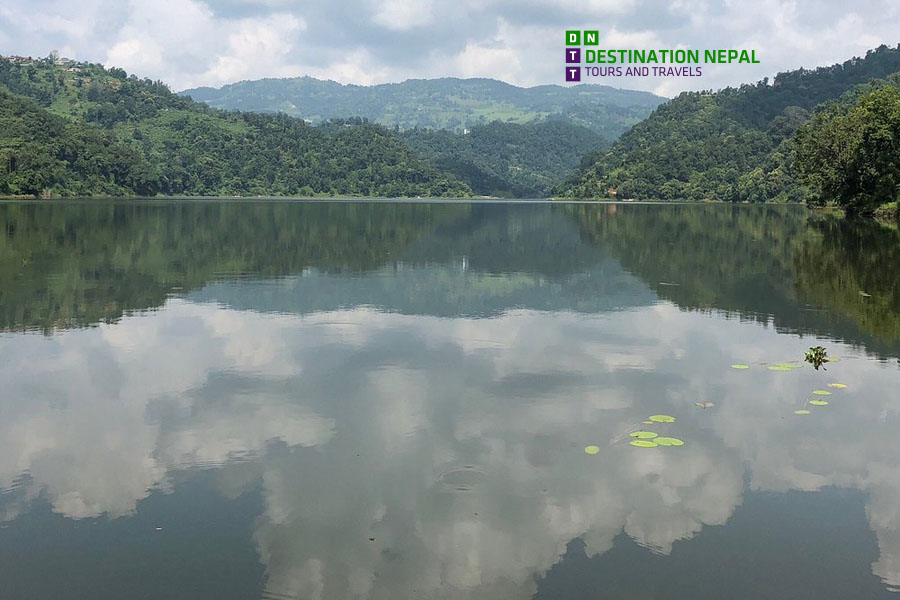
Rupa Lake, also known as Rupa Taal, is one of the most beautiful and lesser-explored freshwater lakes in Pokhara, Nepal. Located just 10 kilometers southeast of Lakeside Pokhara, in the Pokhara-Lekhnath Metropolitan City, this serene lake offers a perfect escape for those seeking tranquility, natural beauty, and birdwatching opportunities.
Spanning 1.35 square kilometers and sitting at an elevation of 600 meters, Rupa Lake is fed by the Talbesi stream and Dhovan Khola, and its outlet flows into Tal Khola. A ridge separates it from nearby Begnas Lake, and together they form a peaceful twin-lake region ideal for eco-tourism. With a maximum depth of 6 meters, Rupa Lake is perfect for boating, canoeing, and fishing, with local fishermen operating cage fisheries in its calm waters.
The lake supports a rich ecosystem, hosting over 36 species of water birds and several fish species. Rupa is also gaining recognition for its sustainable tourism, cultural fairs, and scenic surroundings. You can hike, cycle, or take a short drive to reach the lake, and affordable boating makes it more accessible than the more touristy Phewa Lake.
Visitors can also explore nearby attractions like Begnas Lake, Peace Pagoda, Devi’s Fall, and Begnas Bazaar, or take part in early morning yoga by the lake, making it a perfect spot for nature lovers and peace seekers.
Whether you’re a photographer, a birdwatcher, or a traveler looking for a peaceful lakeside experience, Rupa Lake Pokhara is an emerging destination you won’t want to miss. Its natural beauty, cultural value, and relaxing environment make it one of the best things to do in Pokhara.

